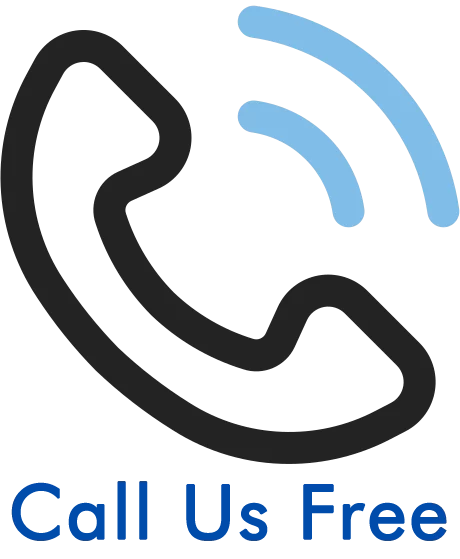How To Make A Personal Injury Claim After A Slip And Fall Accident
A Guide To A Personal Injury Claim After A Slip And Fall Accident
This guide contains information on how to make a personal injury claim after a slip and fall accident. As you go about your day, whether shopping, at work or on the roads, there may be a party that owes you a duty of care and has a responsibility for your safety. We will examine who owes a duty of care and how breaching this duty could cause you to become injured.
Also in this guide is a breakdown of how slip and fall accidents can occur, the types of injuries that can be sustained due to falling, and the possible personal injury compensation you could claim for your injuries.
At the bottom of this guide is an overview of the benefits to you of making your personal injury claim with a solicitor who offers their services under a type of No Win No Fee agreement.
Our advisers are available to provide more information and address any concerns you may have about your potential claim. You can contact them via:
- Phone on 020 3870 4868
- Our online contact us form
- Our live chat function
Select A Section
- How To Make A Personal Injury Claim After A Slip And Fall Accident
- Common Injuries Resulting from Slip and Fall Accidents
- Proving A Personal Injury Claim After A Slip And Fall Accident
- Payouts For Personal Injury Claims After A Slip And Fall Accident
- No Win No Fee Personal Injury Claims After Slip And Fall Accidents
- Related Claim Guides For Slips, Trips And Falls
How To Make A Personal Injury Claim After A Slip And Fall Accident
This guide looks at who could be eligible to make a personal injury claim after a slip and fall accident that has happened in public places such as the supermarket, park, out on the pavement, in banks or in restaurants. Per the Occupiers’ Liability Act 1957, the party in control of a public place owes a duty of care to all visitors to ensure their reasonable safety. If you have been injured in a slip, trip and fall accident, you will need to satisfy the following requirements in order to start a claim:
- First, you need to establish that you were owed a duty of care at the time of the accident by the party in control of the land.
- Secondly, you need to show this duty was breached.
- Finally, you need to demonstrate that this breach caused you to be injured.
Time Limit
For most personal injury claims, you will have 3 years from the date of the accident to start your claim, as set out in the Limitation Act 1980. However, there can be exceptions to this time limit.
For advice on whether your particular case may qualify for an exception, you can consult our team, who can offer further information on the time limit for starting a claim.
Common Injuries Resulting from Slip and Fall Accidents
Slips, trips and falls can happen in many different environments. They could be considered common accidents. These accidents can result in minor injuries such as scrapes and bruises or more severe injuries such as brain damage. Before we look at the injuries that could be caused by slip and fall accidents, we have provided you with an example of a potentially eligible public liability claim.
As an example, you are shopping in a supermarket. A juice bottle has fallen from a shelf and split, spilling the contents on the floor. The supermarket has not cleaned the spillage up or put out a ‘wet floor’ sign to warn people of the hazard. You, therefore, slip on the spilt liquid and fall over, fracturing your arm. In this scenario, the party in control of the supermarket owed you a duty of care to ensure your reasonable safety. By not cleaning the spill up in a reasonable timeframe, they breached this duty. This breach resulted in your slipping on the spill and caused you to sustain injury.
Some examples of injuries that can result from slip and fall accidents are listed below:
- Injuries to the knees or other joints.
- Broken bones, such as a forearm fracture.
- Back injuries, for example, a slipped disc.
- Head injuries, such as concussions
As with any accident, you should seek medical attention after a slip and fall. This is not only important for your health, but the medical records can be used as evidence for your claim.
Proving A Personal Injury Claim After A Slip And Fall Accident
Like any other claim, a personal injury claim after a slip and fall accident requires evidence to show that the party in control of the land’s breached their duty of care. Some examples of possible evidence you could gather to support your claim are:
- Your medical records: After treatment, you can request copies of any scans or tests that were done.
- Photographs: Photographs can be used to show the cause of the accident and the extent of your injuries.
- Take down the contact details of any witnesses so they can provide their accounts of how the accident happened during the claims process.
- CCTV: if available, you can request the CCTV footage from the time of the accident.
- Receipts, invoices or payslips: Documents illustrating the monetary losses you incurred due to your injuries.
This list is intended to provide guidance on the types of evidence you could gather to support your personal injury claim. So, for example, if there was no witness to your accident, you can still make your claim using other types of evidence.
For more guidance as to what types of evidence you should gather to support your claim, you can speak to our team of advisors. If your claim is valid, they could connect you with a personal injury solicitor from our panel, who could assist with the collection of evidence and presenting your case within the time limit for personal injury claims as part of the service they provide when representing you.
Payouts For Personal Injury Claims After A Slip And Fall Accident
If your claim is a success, you will receive personal injury compensation for the pain and suffering of your injury and/or any psychological illness; this head of claim is known as general damages.
Below you will find a number of injuries alongside their compensation amount guidelines. These figures have been taken from the Judicial College Guidelines (JCG), a publication that contains guideline award brackets. A personal injury solicitor can refer to the JCG in conjunction with your medical evidence to calculate the potential value of your claim.
It should be emphasised that this table has been provided as a guide only, as personal injury claims after a slip and fall accident are calculated on a case-by-case basis.
Compensation Table
| Injury | Severity | Description | Amount |
|---|---|---|---|
| Back | (b) Moderate (i) | Compression/crush fracture of the lumbar with a substantial risk of osteoarthritis and constant pain and discomfort. | £27,760 to £38,780 |
| Back | (b) Moderate (ii) | Disturbance of ligaments and muscles giving rise to backache, soft tissue injuries and exacerbation of pre-existing conditions. | £12,510 to £27,760 |
| Shoulder | (b) Serious | Dislocation of shoulder with lower brachial plexus damage causing pain, sensory symptoms in the forearm and weakness of grip. | £12,770 to £19,200 |
| Shoulder | (c) Moderate | Frozen shoulder with limitation of movement and discomfort for about two years. | £7,890 to £12,770 |
| Elbow | (b) Less Severe | Impairment of function but no significant disability or need for major surgery. | £15,650 to £32,010 |
| Knee | (a) Severe (ii) | Leg fracture extending into the knee with constant, permanent pain, movement limitation or impairment of agility. | £52,120 to £69,730 |
| Knee | (b) Moderate (i) | Torn meniscus, torn cartilage or dislocation resulting in wasting, minor instability, weakness or other mild future disability. | £14,840 to £26,190 |
| Ankle | (b) Severe | Extensive treatment period and/or period in plaster where plates/pins have been inserted with significant residual disability. | £31,310 to £50,060 |
| Ankle | (c) Moderate | Ligamentous tears and fractures causing difficulties with walking, standing for long periods or irritation from metal plates. | £13,740 to £26,590 |
Special damages
Special damages, the other head of claim that can make up your settlement amount, can be awarded if you have suffered financial losses due to your injuries. Some examples include:
- Loss of earnings
- Domestic care
- Home alterations
- Transport costs
Remember to keep any documents (your receipts, invoices or payslips) that show your financial losses.
No Win No Fee Personal Injury Claims After Slip And Fall Accidents
After assessing the validity of your claim, our team of advisers could connect you with a personal injury solicitor from our panel. You could then be offered a type of No Win No Fee contract called a Conditional Fee Agreement or CFA.
You will generally not be met with any upfront fees for the solicitor’s services, nor with any ongoing fees during your claim under a CFA. If your claim is unsuccessful, you will not have to pay the solicitor for the work they have done.
Following a successful claim, the solicitor will take a pre-agreed percentage of your compensation, this is called a success fee. Success fees are agreed upon prior to the start of your claim. This percentage is legally capped.
Our advisers are available to provide more information on making a personal injury claim after a slip and fall accident. They can also address any concerns you may have. You can contact them via:
- Phone on 020 3870 4868
- Our online contact us form
- Our live chat function
Related Claim Guides For Slips, Trips And Falls
See more of our guides here:
- Find out about making a personal injury claim following a slip and fall at work.
- Learn about when you could make a claim after an accident in a garden.
- Read more about how to prove fault in a slip and fall accident.
- When Could You Make A Public Liability Claim If There Were No Wet Floor Signs Displayed?
- Applying For A Personal Injury Claim Interim Payments
More useful resources
- GOV – Requesting CCTV footage
- NHS – Self-funding care
- GOV – Statutory Sick Pay
Thank you for reading our guide on how to make a personal injury claim after a slip and fall accident. You can reach our team of advisers using the contact information above for information about making a personal injury claim.







